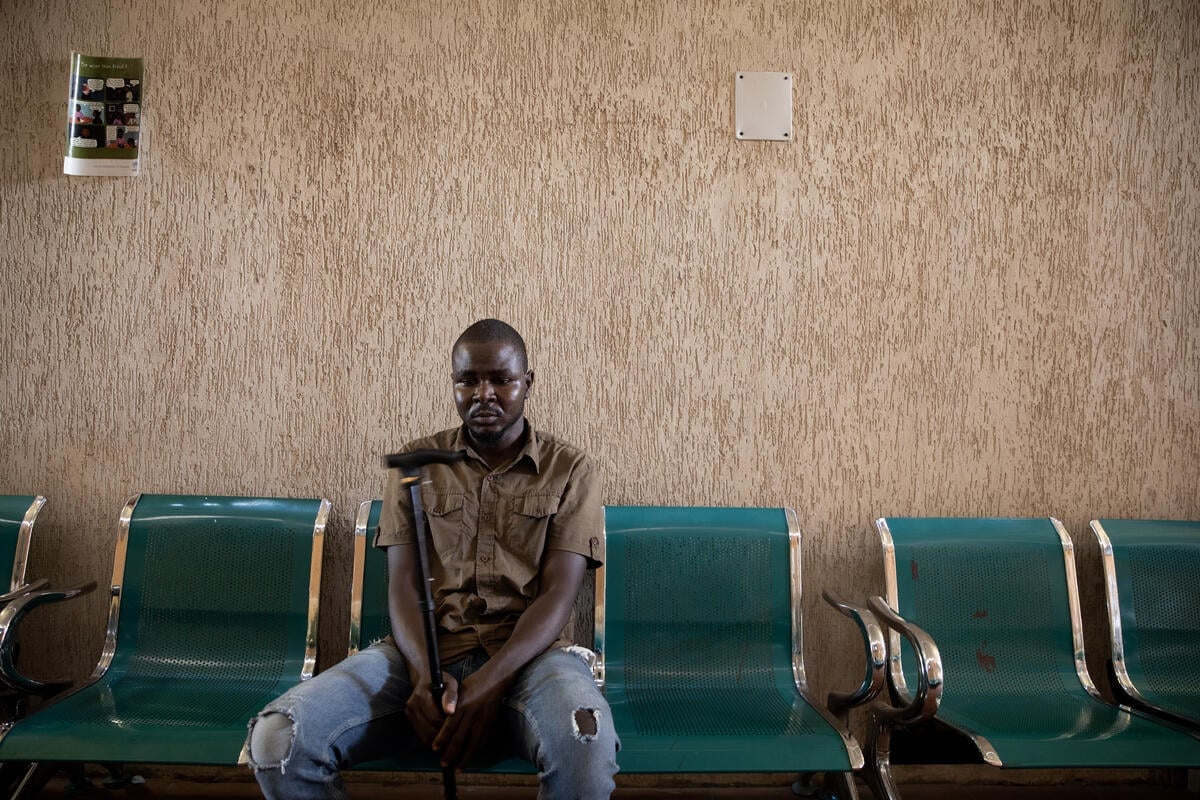Registration of Somali asylum seekers resumes with tougher measures in place
Registration of Somali asylum seekers resumes with tougher measures in place

DADAAB, Kenya, November 1 (UNHCR) - After a two-week suspension, the registration of new Somali refugees seeking asylum in Kenya has just resumed with the introduction of new security procedures aimed at curbing false claims.
Government officials said refugees waiting at a reception centre in Liboi on the Kenya-Somalia border would now only be transferred to camps in Dadaab once their fingerprints had been checked against the country's records of registered persons - a process that could take up to 10 days.
"We will start with the fingerprinting of the group already at the border. We are targeting all persons over 15 years of age," Charles Weru Githui, the Kenyan government official overseeing the new registration exercise, told a planning meeting in Dadaab on Monday.
"The idea here is to ensure that the few people misrepresenting themselves are not spoiling the chances of those who are genuinely in need," he added. By Monday, 1,170 people had been pre-registered by immigration officials and were waiting to be fingerprinted.
Two weeks earlier, the government had ordered the suspension of a UNHCR-led exercise to register and transfer Somali refugees from Liboi to the Dadaab camps. The move came because some Kenyan nationals were presenting themselves as refugees, while some Somalis who had already registered in the camps were posing as new arrivals in a bid to get more assistance.
Githui said he was confident that the fingerprinting of those waiting in Liboi would be completed by Wednesday. Their prints would be sent immediately to Nairobi for cross-matching against the country's records.
"Our system will be able to pick up matching fingerprints. When there is a match, it means that the person has previously been registered as a Kenyan," Githui said. He added that the National Registration Bureau would also check the prints against a UNHCR database of persons registered as refugees.
"We will authorise the transfer [from Liboi to Dadaab] of only those who do not have previous registration records," Githui said. Results from the first fingerprinting exercise are expected by November 8.
UNHCR, meanwhile, is making arrangements to care for up to 1,000 Somali asylum seekers waiting at Liboi for the results of their fingerprint checks. "We have to increase the water points at the reception centre and put in more toilets to cater for the prolonged stay of people at the reception centre," Nemia Temporal, head of the UNHCR office in Dadaab, said. A private contractor will provide meals.
The UN refugee agency is also speeding up expansion work at a second reception centre in Ifo. "A full registration of refugees transferred from the border will be carried out in Ifo camp before they are allocated plots in one of the three camps [at Dadaab]," Temporal said.
Ali Haji Sanweyne, a 28-year-old carpenter from Baidoa, had his prints taken at Liboi on Tuesday after waiting almost two weeks to register. "We will wait for as long as it takes for UNHCR to move us from here," Sanweyne said on learning that he would have to wait a bit longer before being moved to Dadaab.
An arrangement with a local group in Liboi ensured that Sanweyne and others like him had something to eat. None of those questioned objected to the fingerprinting measure.
Since the beginning of the year, some 32,000 Somali refugees have fled to neighbouring Kenya to escape rising insecurity in southern and central Somalia. The influx has pushed the total number of refugees in the three Dadaab camps to nearly 160,000.
By Millicent Mutuli in Dadaab, Kenya









